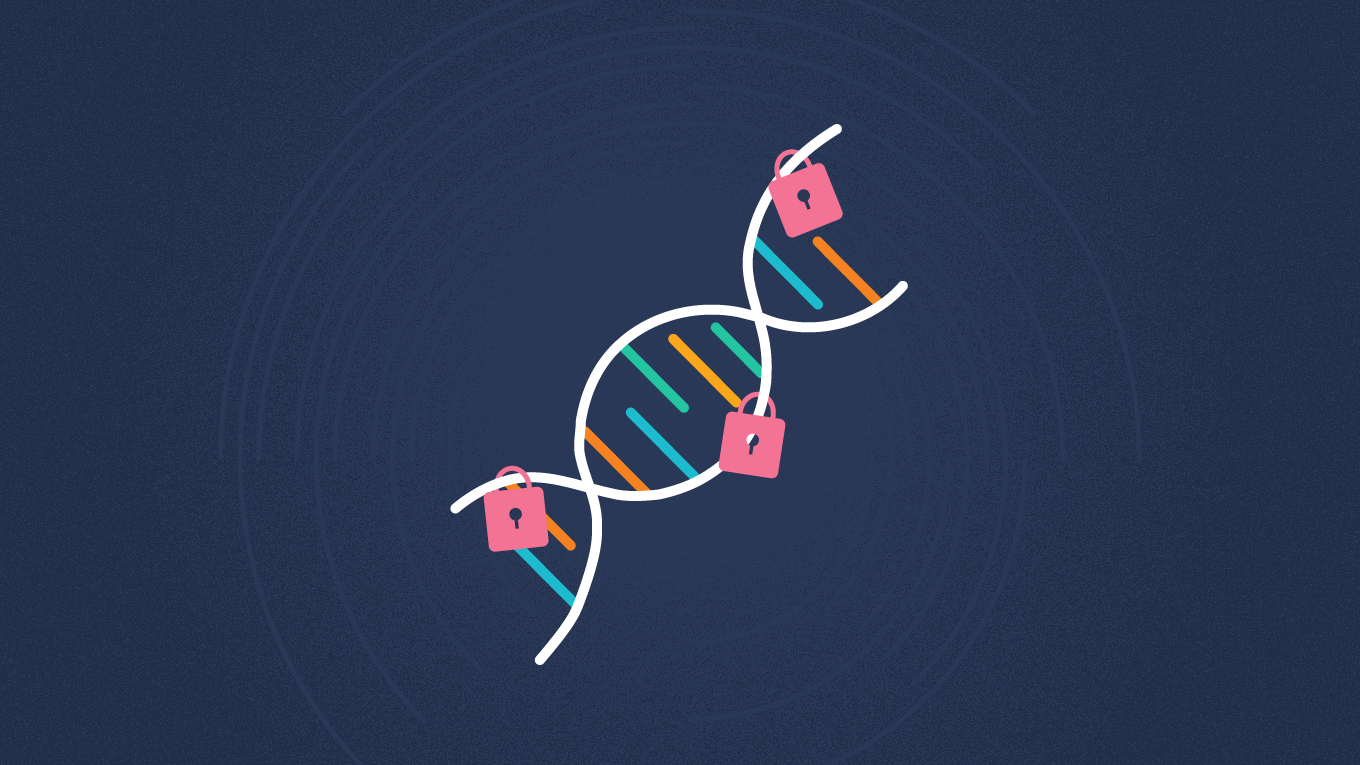Why Ginkgo Cares About Genetic Privacy
March 18 2021

Our products were built with genetic privacy as a core ethical and design principle. We’d like to explain a bit more about our company, how we do our testing, and why we don’t collect human genetic information.
There are many reasons why people should care about their genetic privacy and who might have access to the sequences of their DNA. We take all privacy concerns very seriously, and we developed our pooled test with privacy as an essential design principle.
Our test is a public health tool designed for communities. This means the only data we’re interested in collecting or analyzing is data that will enable communities to formulate the best public health response to COVID-19. Specifically, we’re only interested in the viral RNA in the pooled samples.
At its core, our pooled test is designed to be an easy way for groups of people to swab their nostrils and receive a result. Each nasal swab is also bound to capture some biological material from each person, including small bits of their DNA. However, we have no interest—financial, scientific, or otherwise—in the human DNA that’s also present in these samples. Still, we feel it is necessary to safeguard people’s privacy through several layers of protection.
Layers of Privacy Protection
Our first layer of privacy protection begins at the school and on our website. The names of the individuals in a pooled sample cannot be entered into our website by schools. This means we never see information about which person’s swab is in which tube; we do not know this information. The participants in each tube are anonymous to us. Our secure website also provides a layer of protection at the school by minimizing access to results to only people authorized by each school.
We also protect privacy in our labs. When pooled samples are sent to our network of labs, we use one of two methods to identify whether or not the virus is present in the sample. Some labs use a technique called PCR, which gives us a simple “yes” or “no” answer to whether the genes of the virus—and thus, the virus—are present in a sample. Our lab and others use PCR combined with a technique known as sequencing, which also gives us a “yes” or “no” answer. However, the sequencing process can also read and record the sequence of viral genes. This gives us more detail about the virus if it’s present in a sample, which can be useful for detecting new variants. You can read our “ELI5” explainer post on how our test works for more information.
As part of our lab testing process, we do look for a particular human gene sequence. But we only do this as a quality control measure to ensure that samples were collected correctly and that our test worked as intended. This is a common method used in viral tests to ensure quality, and we selected our quality control sequence with privacy in mind. The sequence is nearly identical in every person and can’t be used to identify individuals. The gene sequence isn’t used or recorded for any purpose other than to provide a test result.
We also do not store the sequence of this gene. Simply put: we have no interest in it nor do we have your permission to store or use this information. Other than the quality control gene sequence, we never sequence, analyze, or use the human DNA that is present in the pooled sample.
Additionally, we do not store samples for longer than what is typical for quality standards. In our lab at Ginkgo, most of the time the sample is completely used up during the testing process. If there are leftover samples, we only retain those samples for 7-14 days and only do so for the purpose of quality checks or re-running tests if necessary. Thus, we do not (and cannot) perform tests on samples for research or any other purpose.
Our test also allows us to understand how the virus is changing and gives us the ability to track new variants. We can do this by sequencing the viral RNA when it is found in a pooled sample. Comparing viral RNA sequences is how public health organizations like the CDC understand what public health measures are needed to end this pandemic. To assist this effort, we may sequence the viral RNA that is found in a pooled sample. This genetic information cannot be connected to an individual.
Everybody’s Health is Connected
Many companies have benefited from collecting personal information from individuals and exploiting that data. We started Concentric with the goal of empowering communities and enabling public health because everybody’s health is connected. We are focused on making sure that our platform is used responsibly and with care for everyone it impacts. When it comes to Concentric, we’re not interested—even remotely—in the use of human DNA, human RNA, or other human biomaterials gathered through testing.
Glossary
DNA: The molecule that’s used by living things for long-term storage of genetic information. (back)
Gene: “Gene” is actually a very tricky word to define! Nowadays, it usually means the sequence that instructs a cell to make a certain product. (back)
Genetic privacy: The idea that personal genetic information must be protected from unauthorized access or use. (back)
PCR (polymerase chain reaction): A technique that makes very many copies of a piece of DNA. (back)
RNA: Like DNA, RNA can provide instructions for making certain products. But it can also do more, like help cells carry out chemical reactions. (back)
Sequence: A series of specific molecules of DNA or RNA that make up a longer strand. (back)
Sequencing: Recording the specific molecules that make up a strand of DNA or RNA. (back)
View our running glossary here.